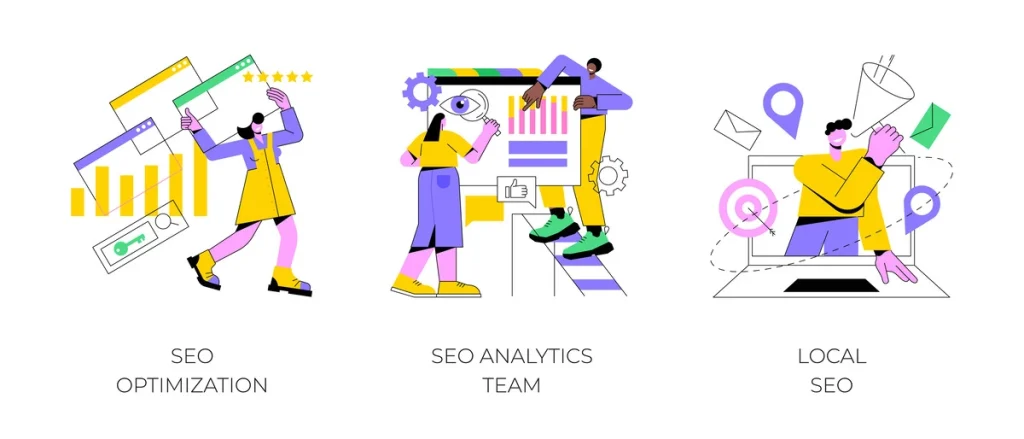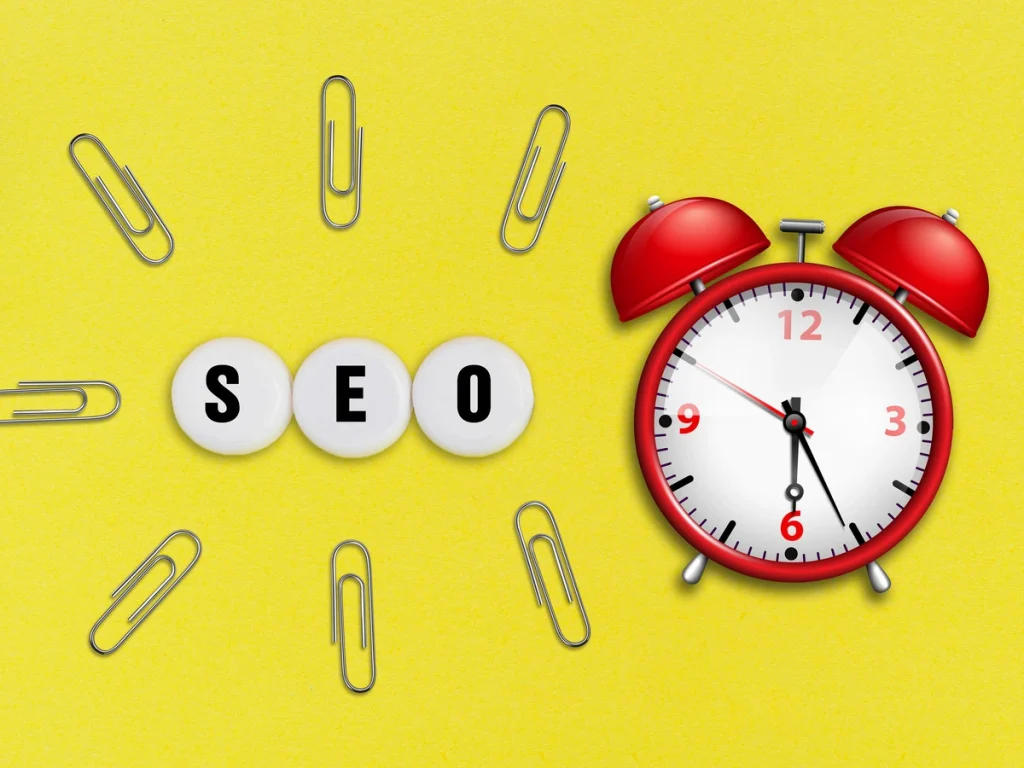On-page SEO can make a big difference to your website’s ranking. The on-page SEO technique is well-known for converting leads to sales. Creating an on-page SEO strategy can propel your business to success in the UK. Therefore, a dependable SEO agency in London can provide you with results-driven on-page SEO services to boost your business’s online presence.
Along with off-page SEO and technical SEO, on-page SEO optimisation is one of the foundations of SEO. Therefore, you should be familiar with the on-page SEO guide. The following article will present a detailed step-by-step guide to on-page SEO. Let’s start now.
On-Page SEO
Section 01: Basics of On-Page SEO
What is On-Page SEO?
On-page SEO aims to boost a website’s search engine rankings and generate organic traffic. Aside from producing relevant and high-quality content, on-page SEO involves optimising the title, meta, header, and images. Furthermore, it involves ensuring your website has authority, credibility, and competence.
Why is On-Page SEO Important?
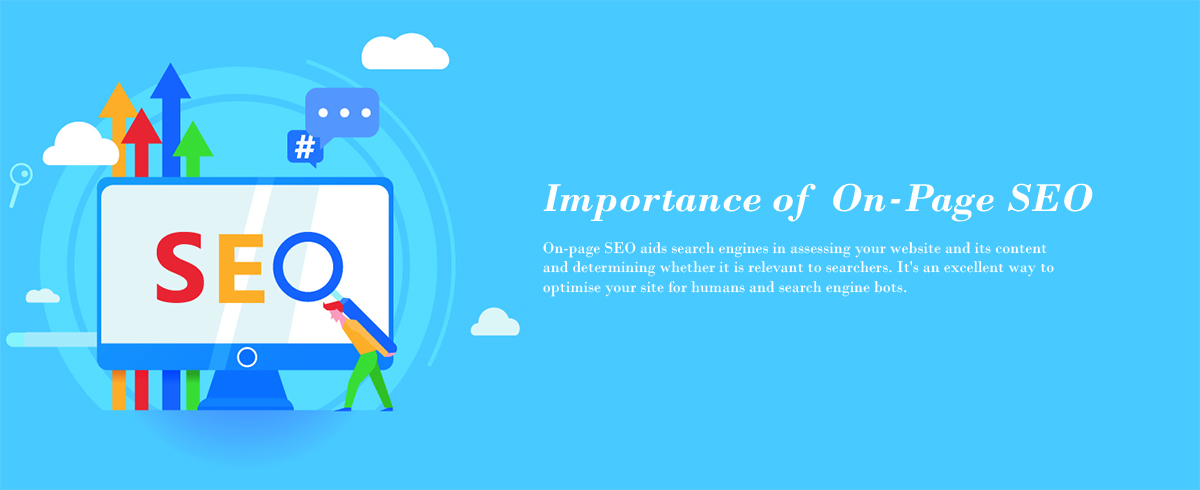
On-page SEO aids search engines in assessing your website and its content and determining whether it is relevant to searchers. It’s an excellent way to optimise your site for humans and search engine bots.
On-page SEO is also known as On-Site SEO since visitors can see your changes as you optimise your site. On-page SEO makes your content more valuable to Google by helping it rank higher in the organic search results.
Website Crawl
You can find out all the pages that search engines have indexed on your site. You can use the free page performance testing tool to do this. When you crawl your site and export the results to an Excel file, you should pay attention to three significant columns:
- The title of the page.
- The URL of the website.
- The meta description of the page.
Updating Page Titles
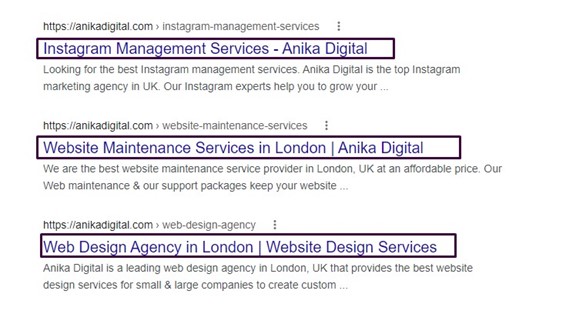
Ensure your page names and meta descriptions are up to date. You should not use more than 160 characters in your meta descriptions. At this length, the ellipses should not cut off any descriptions. Avoid overloading this section with keywords. The meta description is not difficult to write, but it deserves the same consideration as the page’s content.
Updating Meta Descriptions
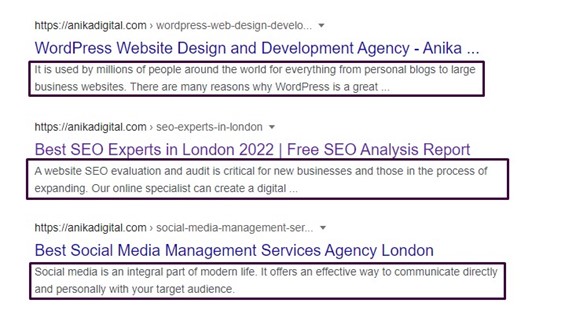
Your meta description should contain the same keyword as your page’s headline. Don’t simply copy the piece as it appears on the page. If you keep it below 150 characters and give readers information about your page.
URLs Optimisation

On-page SEO techniques often overlook the structure of your URL. Google’s search results started using a strange URL a while back. Make the URL of your pages easy to understand for visitors and search engines alike.
Ensure the URL is concise, descriptive, and includes the keyword between dashes. As well as creating subpages, blog articles, and other internal content, they keep your site’s structure constant.
Section 02: Optimising Your Content for SEO
We’ve covered why on-page SEO is important, so let’s talk about how to optimise your content. This chapter will teach you how to optimise each website page for keywords.
Visual Content Optimisation
As we discussed earlier, image alt text is essential. Ensure the image alt text contains your keyword to optimise your visual material. In addition to improving the SEO of the page, it will also increase its position in image searches.
Use Target Keywords in the First Paragraph
It is still the most effective on-page SEO strategy. You should have focused keywords at the start of an H1 tag and at least once in the first paragraph. Making the keyword part of the first sentence is even better.
Alternatively, you can make the keyword bold or italic to make it stand out more. Place your primary keyword within the first 100-150 words of your content. It gives Google an idea of the purpose of your page.
Optimise Headers Tag
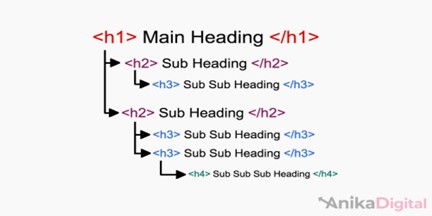
In some ways, H1 tags are like small title tags. Google has indeed stated that using an H1 tag helps them understand a page’s structure. You should ensure your title is enclosed in an H1 tag in your website code. The H1 tag should contain your keyword.
Ensure that at least one subheading contains your targeted term. Add an H2 tag to the subheading. Further, SEO tests show that enclosing the target keyword in an H2 tag is beneficial. Using H3, H4, H5, and H6 tags as subheadings for their parent H2 tags is essential. You can make use of secondary headings in smaller headings like H2 or H5. It will assist crawlers in determining how deep and how diverse your content is.
Maintain the Frequency of Keywords
The frequency of your keywords is the number of times they are used throughout your content. According to Google, using the same keyword several times is ineffective. However, SEO experts with years of experience will confirm that it works. When the term appears more than once on your page, Google may be more confident about your topic.
That doesn’t mean you should stuff the page with keywords. To convince Google that your page is about the topic you want, simply repeat your target keyword a few times. Using your keyword naturally a few times should be okay.
Edit and Proofread Page Content
The best copy is thorough, straightforward, and solution-oriented. Make it compelling! Write for your target audience and explain what you can do to help. Before posting your material, make sure that the spelling and grammar are correct. Use headers and subheaders to break up text and make it easier to read. It would be beneficial to have more than 500 words on each page.
Outbound Linking

Outbound links are the links on your site that lead to other sites. Adding external links from your websites to other web pages related to a topic is a smart strategy for on-page SEO. Your website will appear to be more trustworthy to Google.
If you are trying to rank well in the search results for your targeted keyword, try linking to authoritative sources of information. By linking to authoritative sources, you may improve your chances of receiving backlinks.
Section 03: Title and Description Tag Optimisation
We will show you how to make your titles and meta descriptions SEO-friendly in this chapter. Google says that title tags play a crucial role in search engine rankings. The same goes for your description. Rather than Google understanding the content on your page, searchers use your description to decide which result to click. Please read on to improve your SEO title tags and descriptions.
Use a Front-Loaded Title Tag
The title tag is the most significant element of on-page SEO. Title tags provide search engines with a concise summary of your website. If a keyword is near the beginning of the title tag, it has more weight with search engines. You do not need to put your keyword at the front of your title. Doing so is not always practical, It is better to put your title near the front of your title tag.
Utilise Title Tag Modifier
Title Tag Modifier allows you to disrupt the flow of the SERP (Search Engine Results Pages) with your title tags. Simply put, these title modifiers are phrases added to search queries like “2023” or “Best”. When optimising for long-tail variations of your target term, you can use modifiers such as best, guide, rapid, and review. Many users use modifiers to search and then scan through the results on a SERP (Search Engine Results Page).
Write Unique and Optimized Meta Description
The use of meta descriptions can improve click-through rates. The meta description will increase clicks compared to a page without one. You need to write your meta description.
Google can use the content of your web page as a meta description at random. The description will not be as good as one that is manually added and well-optimised. If you choose to write a meta description that is not relevant to the keyword, this can also have an adverse effect. Create unique descriptions for your homepages, primary pages, and categories that are relevant.
Section 04: Create SEO-Friendly Content
It is now the time to develop SEO-friendly content that will rank high. It involves a lot more than just putting keywords on your page. Materials for ranking in 2022 must include the following:
- Unique and captivating content.
- Exceptionally helpful content.
- Search intent optimised content.
We’ll explain how to ensure your SEO content is high quality throughout this section.
Write Unique and Optimised Content
Search engine optimisation is all about content. The goal of SEO is to give users the results they want. Therefore, the search engine emphasises relevant, meaningful, and optimised content to satisfy users.
How would you define optimised content? It’s content that strikes a balance between expert writing and keyword research. You must also create content that is original and captivating. It helps avoid accidental plagiarism, which can harm your site’s credibility and result in a manual penalty.
With SEO writing assistant tools, you can check your content for readability, keyword potential, and overall distinctiveness.
Write Readable Content
It doesn’t matter how well-optimised your website is if the content does not meet quality standards. It’s vital to remember that SEO is useless without high-quality content. It’s essential to create content that matches your users’ needs and responds to their questions.
Reader-friendly content can significantly enhance your site’s user experience. Most internet users do not read text word for word on a page. Instead, they search for the essentials. Think about this when creating your website’s content.
Section 05: Optimise for Click-Through Rate
There are two reasons why organic click-through rates matter:
- CTR is first and foremost a ranking factor on Google.
- A higher CTR can also help you attract more website visitors.
Throughout this chapter, we present practical techniques to increase organic CTR.
Make use of Question Title Tags
Researchers examine millions of Google search results from a few years ago to see why some pages get more clicks than others. The most exciting thing about the results was that question-based titles get more clicks. Consequently, test title tags with a question whenever possible.
Almost everyone looking for something will want to know what that means. Users add a question tag before the targeted term whenever someone searches for something unclear to them. Hence, using questions in titles makes sense.
Use FAQ schema or Reviews
There is no direct benefit to your SEO from schema. You can, however, get rich snippets by using schemas. Also, rich snippets may assist you in gaining more clicks. Schemas for reviews and FAQs are two of the most effective types for obtaining rich snippets. You can ensure that your schema is correctly formatted using the structured data testing tool.
Bring Emotion to Your Title Tags
We found that titles with strong emotional associations received seven per cent more clicks than those without. People tend to click on headings that have an emotional appeal.
Having an exciting title tag will increase the chances of a user accessing the page from the results page. SEO is about considering what users want and how they interact with a website. Visitors and search engines consider the title tags to be their first impression of a website. As a result, you should make the title tag appealing to your users.
Update the Title and Description with the Current Year
Your click-through rate will not increase or decrease by adding the year to your title and description. However, it may be helpful. It is especially relevant to the content that becomes outdated fast. Add the year to your title and description, showing that your content is up to date.
Conversion Optimisation
You will miss out on potential customers and leads by not optimising your website. Many things can go wrong with your website; however, ensuring every single page of your website has a call to action, even multiple calls to action, is a good place to start.
Section 06: UX Signals for On-Page SEO
This chapter will learn how to optimise your content for UX signals. Another way to put it is how Google searchers respond to your content. Now let’s look at how you can have your content keep Google searchers on your website.
Feature Content Above the Fold
People who come to your site through Google expect a quick answer. Therefore, you shouldn’t have any images above the fold. Let the headline and introduction be the focal point of your page. Adding an image to your post will make it more visually appealing. In contrast, if it forces your articles to the bottom of a page, that’s a wrong move.
Chunk Up Your Content
You would want your visitors to read every word on your website. In this regard, you should make your content extremely skim-friendly. Otherwise, you may experience a high bounce rate, which results in lower conversions, revenue, and ROI.
To make your text more readable, you should:
- Make sure the page is easy to skim. It is good to break up your content into easily digestible sections.
- Make use of several headers and subheadings.
- Make frequent use of paragraph breaks to prevent big walls of text.
- You should break up your lists into bullet points.
- Your presentation should include supporting graphics and photos.
- Make your sentences simple and actionable.
Maintain an Active Community
An active community on your blog is like having a cheat code that lowers your bounce rate. As soon as people finish reading your piece, they will be able to read the comments section. Those comments help provide context for your article.
Mobile-Friendly Design
Google and other search engines reward mobile-friendly websites for ensuring that all their users have the best experience. Having a mobile-friendly website is no longer an option; it’s necessary.
More than 54% of global traffic comes from mobile devices in today’s digital environment, as people use their phones to consume content. Therefore, if you want your site to be ranked higher, you should design your site for mobile devices.
Section 07: Advanced Tips for On-Page SEO
The final chapter discusses some of our favourite on-page SEO strategies. The following tips are meant to assist you in improving your on-page SEO after you have optimised your page’s title and H1. Let’s move on to the strategies.
Choose Your Target Audience
Choose the audience you wish to reach. Does your buyer persona consist of a single or multiple profiles? As you optimise pages for your site, keep this aspect in mind. Keep in mind that you’re optimising for both humans and search engines.
Perform an SEO Audit and Establish a Site Architecture
It’s time to reorganise and prioritise your web pages based on your index in the template. Find out where your existing pages stand within the structure of your site.
Use the Original Images
Stock photos aren’t as effective for SEO as original images, even when fully optimised. You will rank higher for relevant search terms with more original images and improve user experience. Use your own custom pictures if you’re using stock photos from a thousand other sites.
Produce Comprehensive Content
Consumers can find all the information they need in one place on Google. If your post is comprehensive, you will have a higher ranking for that post. How can you make sure Google views your material as complete? The key lies in LSI keywords.
LSI keywords help Google figure out how relevant a page is. If you want to make sure that you use LSI keywords, search for your term on Google and scroll to the bottom of the page to the related searches.
Internal Linking
The process of linking to other pages within your website is known as internal linking. Linking to other pages will keep visitors on your site longer and show Google that your site is relevant. The more information you provide to Google will improve your site’s ranking in the SERP.
Optimisation of Images
You should give your images descriptive filenames and alt texts. Google can then decipher what each image depicts. Optimise one image around your targeted keyword.
Make sure the filename includes your target term. Your keyword should also appear in the image alt tags. Optimising your images for SEO can also help your website rank higher by giving search engines a better idea of what your website is about.
Page Speed
Search engine giant Google acknowledges the importance of page loading time as a ranking factor. The loading speed of your website will improve if you switch to a faster host. Remove third-party scripts. Minimise your page’s overall size as well.
Google places a high priority on the user’s experience. Google is aware that slow-loading and careless sites lead to visitors leaving. Moreover, site speed influences conversions and ROI.
Avoid Keyword Stuffing
We just discussed several scenarios where keywords are beneficial and necessary for SEO. Often, beginners make the mistake of keyword stuffing in their on-page SEO. Stuffing your web page with keywords will hurt your SEO and make visitors and readers annoyed.
Featured Snippets
You may see a significant increase in click-through rate if your website appears in a Featured Snippet. You must appear on the first page of SERP to be eligible to receive a Featured Snippet. You’ll need to find first-page results that include a Featured Snippet for the keywords you’re ranking for.
To be featured in the Featured Snippet, you must optimise your content. You should add a brief description to your article if you see a “definition” Featured Snippet. If it’s a list of instructions or suggestions, make sure the page structure is consistent.
On-Page SEO FAQ
How to Do On-Page SEO?
An understanding of on-page SEO is necessary since it is a complex subject. From the preceding guidance of our blog, you can understand the most crucial on-page success elements and approaches step by step.
How to Improve On-Page SEO?
Moreover, if you plan to improve your on-page SEO, you must examine several vital factors. Among these factors are:
- Start by writing titles and meta descriptions.
- Optimise your website with the right keywords.
- Optimise the alt tags for your images.
- Improve the speed of your website.
- Produce original and captivating content.
- Create a mobile-friendly website.
- Develop an internal connecting profile.
What are Off-Page and On-Page SEO?
An on-page SEO strategy involves optimising various aspects of your website that influence ranking. Your website’s ranking depends on several factors. They include website accessibility, keyword optimisation, page speed, and title tags. Off-page SEO aims to gain links from other websites to enhance your website’s authority.
How to Check On-Page SEO?
On-page SEO may require some time for a thorough analysis. Our checklist can help you complete your audit and ensure that your site is optimised correctly despite the complexity of the on-page SEO analysis process.
How to carry out an On-Page SEO Audit?
This type of SEO aims to ensure that the backend features of a page are search engine friendly. On-page SEO audits will check meta descriptions, meta titles, picture alt text, compression, etc. You can gather SEO audit data using Google search console, Google Analytics, Page Speed tools, and other SEO tools.
Can you Do On-Page SEO for My Website?
Sure, we can. Anika Digital’s SEO professionals have years of experience providing on-page SEO services. We will design a result-driven on-page SEO strategy for your website based on your business.
Do You Offer On-Page SEO Services?
You must understand what search engines look for and how people interact to achieve high search rankings. To rank highly, you need effective on-page SEO services. Its success will depend on your optimisation strategy. We offer effective on-page SEO services at Anika Digital to help your website rank higher on search engines.
Which Element is Most Important for On-Page SEO?
In the context of on-page SEO, your content is undoubtedly the most critical aspect. The more boring your material is, the less traffic you’ll get or the lower your search engine ranking. You must create original, well-optimised content to stand out.

